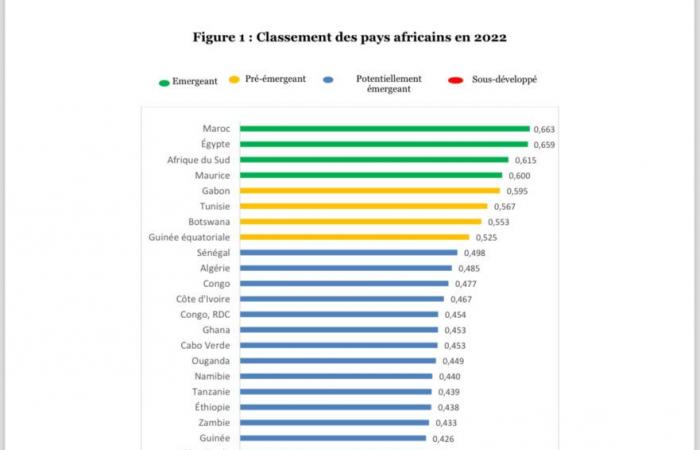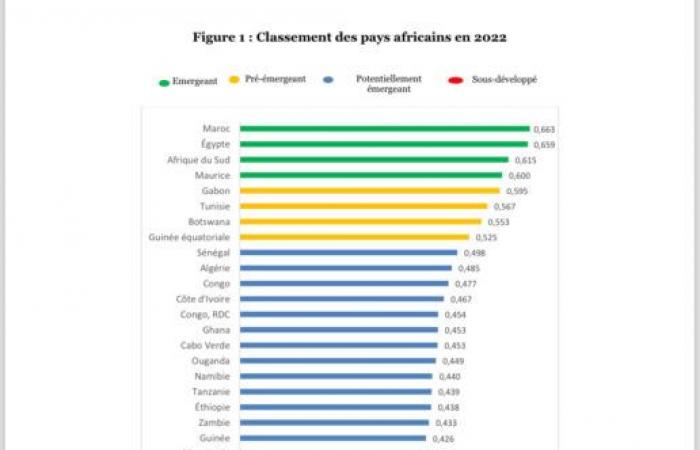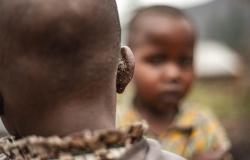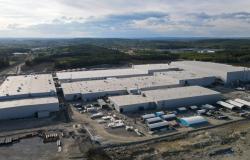The Emergence Institute, through rigorous analysis, evaluates each year the progress of countries towards the objective of economic emergence. This monitoring is based on the methodology developed by the Senegalese economist Moubarack LO (Manuel d’Émergence, Éditions Harmattan, 2021).
The Synthetic Economic Emergence Index (ISEME), the central tool of this assessment, measures the development of countries through four dimensions: inclusive wealth, sustainable economic growth, structural transformation and integration into the global economy.
In 2022, countries classified as emerging (score above 0.75) include Ireland (0.985), China (0.904), Czech Republic (0.886), Malaysia (0.882) and Hungary (0.875). These nations show strong economic performance in all aspects of the index.
On the African continent, Morocco (0.663), Egypt (0.659) and South Africa (0.615) dominate, joined by Mauritius (0.600). These countries are gaining the status of emerging countries, thanks to constant progress in terms of economic growth and diversification.
They are followed bys countries classified as pre-emergingnotably :
– Gabon (0,595),
– Tunisia (0.567),
– Botswana (0,553),
– Equatorial Guinea (0.525).
In third position, the category of potentially emerging countries brings together 31 of the 43 African countries studied. The best performers in this category are:
– Senegal (0.498),
– Algeria (0.485),
– Congo (0,477),
– Ivory Coast (0.467).
Finally, the countries classified as underdeveloped include Gambia, Chad, Sudan, Malawi, Burundi and Sierra Leone.
Global development: Encouraging progress for Africa
In 2022, the African average score stands at 0.428, marking a slight increase compared to 2021 (0.426). Among the countries with the highest increases are Congo, Morocco, Egypt and Uganda. Conversely, some poor performances were noted in Mauritania, Zambia, South Africa and Tunisia.
Comparative analysis of continents
The evolution of ISEME scores by continent over 22 years reveals contrasting trends:
– Eastern and Central Europe: A steady increase from 0.645 (2000) to 0.742 (2022), thanks to economic stability and policies favorable to development.
– Asia: A rise in economic power, with an increase from 0.587 (2000) to 0.670 (2022), driven by China, India and other emerging economies.
– America: A marked increase, going from 0.556 (2000) to 0.660 (2022).
– Africa: A more moderate improvement, from 0.353 (2000) to 0.425 (2022), reflecting progressive but still insufficient efforts.
Focus on Senegal: between potential and challenges
In 2022, Senegal obtains an ISEME score of 0.498, positioning it 9th in Africa and in the category of potentially emerging countries. The country exceeds the African average and has progressed significantly since 1990, when it had a score of 0.351.
Points forts :
– Economic dynamism: Sustained growth and a significant investment effort.
– Inclusive wealth: A notable increase in real GDP.
Ongoing challenges:
– Limited structural transformation, due to slow industrial development and low value added per industrial worker.
– Integration into the global economy is still insufficient, despite progress in the diversification of exports and foreign investments.
To achieve the status of emerging country (score > 0.600), Senegal will need to accelerate its economic diversification and strengthen its industrial sector.
ISEME index methodology
The index, also called the Moubarack LO Emergence Index, is based on 22 indicators divided into four main dimensions: inclusive wealth, economic dynamism, structural transformation and global integration. The construction of this index follows the methodological recommendations of the Handbook on Constructing Composite Indicators (Nardo et al., 2008), guaranteeing a reliable and rigorous evaluation.







